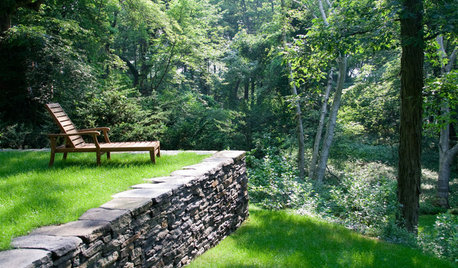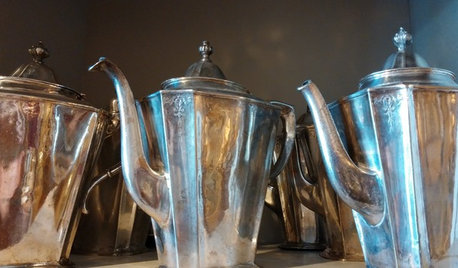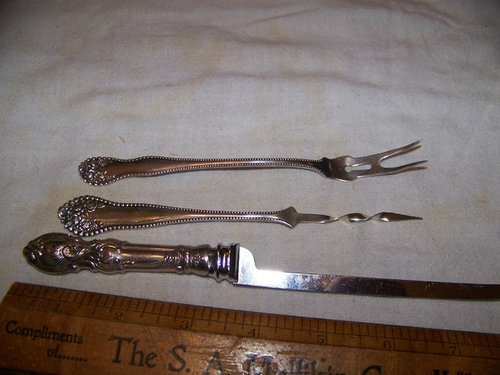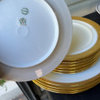I have some "what the heck is this for" silver questions
norar_il
8 years ago
Featured Answer
Sort by:Oldest
Comments (42)
Related Discussions
Have: Heritage, Silver Cloud, Duchesse de Grammont and some other
Comments (1)Any chance I can get all your Ballerina Roses in exchange for a few plants of mine? Campanula BurghaltiiÂ(invasive) ÂKent Belle' poscharskyana (spreads but small statured, not bad) 'takesimianaÂ(invasive) - ÂElizabeth (Korean Bellflower) - 20-24" tall, spreading (invasive I would say), flowers rosy-red and cream, sun or partial shade, cut flowers Louisiana iris:'Black Gamecock' Daylilies: Do you see any more evergreens on my Member page that you might like?...See MoreI have a question,I hope some one can answer
Comments (3)Thank you kay and Nancy., well, now I am not expecting seeds from this,so if I do get seeds and they turn out they are good one and grow me a new daylily, I will be very surprised.Hope it works,anyway.maybe I be beginers luck? jean...See MoreWho has Mandevilla, I have some questions
Comments (10)I have kept mine in front of a south window, in a cool room, watered about every 7-10 days. Cut back just to manage the room available. It doesn't go dormant for me. It never bloomed last year after overwintering, and I almost threw it out, but this year has been loaded with blossoms. It is true, they are not costly, but I just hate to throw out a good plant. Some of my geraniums are nearly 10 years old....See MoreI Have Some Nanking Cherry Questions...
Comments (12)I can't imagine that anyone would try to go to the trouble of pitting something the size of the nankings I've grown -- they're just too small and there's not enough flesh on the pit -- but I like them anyway for what they are. They're very pretty in the spring, seem relatively trouble-free, and I like to snack on them like I would wild strawberries or black raspberries or other small fruits that you don't tend to find in significant quantities but are nice to snack on anyway. Taste-wise I'd compare them to a good but not great and definitely not particularly sweet sour cherry....See MoreUser
8 years agonorar_il
8 years agonorar_il
8 years agoUser
8 years agonorar_il
8 years agonorar_il
8 years agobungalowmo
8 years agonosoccermom
8 years agonorar_il
8 years agoantiquesilver
8 years agolast modified: 8 years agolindac92
8 years agoantiquesilver
8 years agoTom
7 years agonorar_il
7 years agolindac92
7 years agokittymoonbeam
7 years agosunnyca_gw
7 years agoTom
7 years agolindac92
7 years agolast modified: 7 years agohounds_x_two
7 years agolindac92
7 years agolast modified: 7 years agonorar_il
7 years agoTom
7 years agonorar_il
7 years agolindac92
7 years ago
Related Stories

ARCHITECTUREWhat the Heck Is 'Good' Design Anyway?
We yearn for it and strive for it, but good home design isn't always easy to grasp. These 8 prescriptions from an architect can help
Full Story
HOUSEKEEPINGHow to Clean a Glass Shower Door
See which tools and methods will keep those glass shower walls and doors sparkling clean
Full Story
LANDSCAPE DESIGNWhat the Heck Is a Ha-Ha, and How Can It Help Your Garden?
Take cues from a historical garden feature to create security and borders without compromising a view
Full Story
TRADITIONAL STYLEDecorating With Antiques: Silver’s Legacy
Learn how to tell sterling from plate, ways to display pieces and why silver is so darn special to begin with
Full Story
FUN HOUZZDo You Dare Bring Home Some Liberace Razzle-Dazzle?
A new HBO movie highlights the ultimate showman's over-the-top bling all around the house
Full Story
FEEL-GOOD HOMEThe Question That Can Make You Love Your Home More
Change your relationship with your house for the better by focusing on the answer to something designers often ask
Full Story
ORGANIZINGPre-Storage Checklist: 10 Questions to Ask Yourself Before You Store
Wait, stop. Do you really need to keep that item you’re about to put into storage?
Full Story

LIGHTING5 Questions to Ask for the Best Room Lighting
Get your overhead, task and accent lighting right for decorative beauty, less eyestrain and a focus exactly where you want
Full Story












lindac92